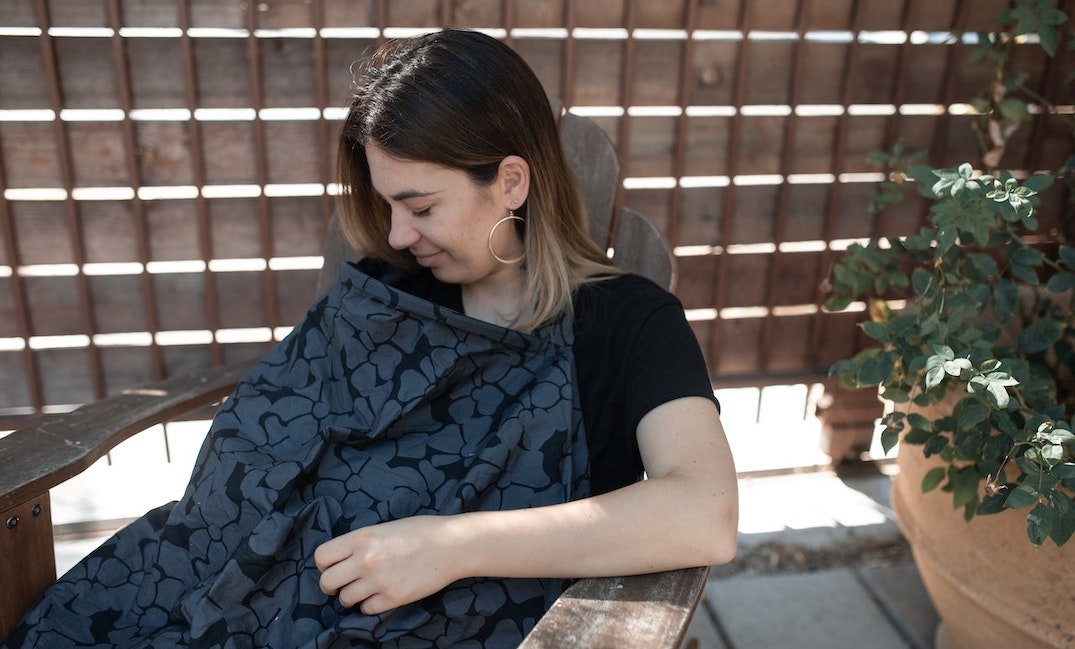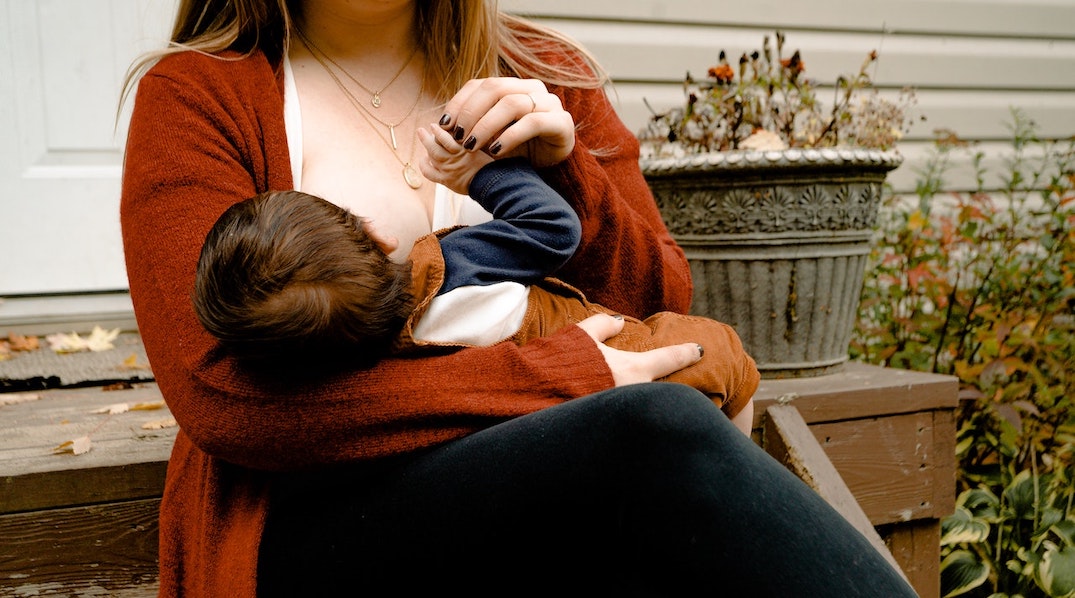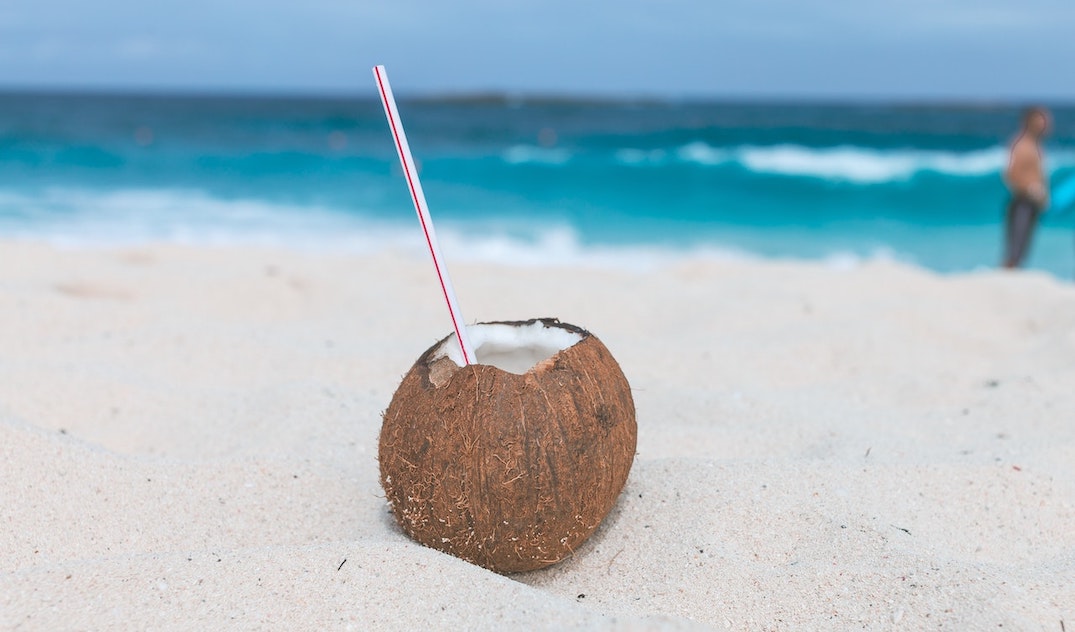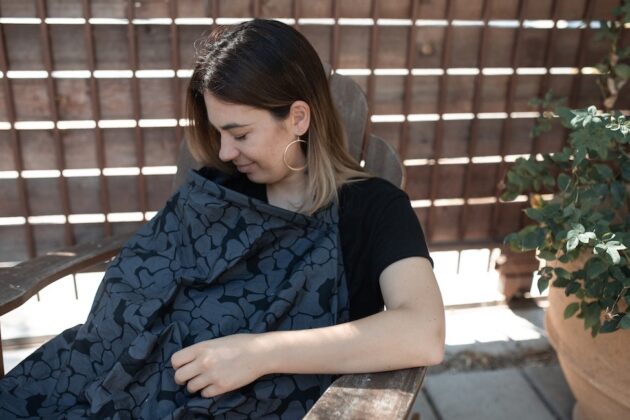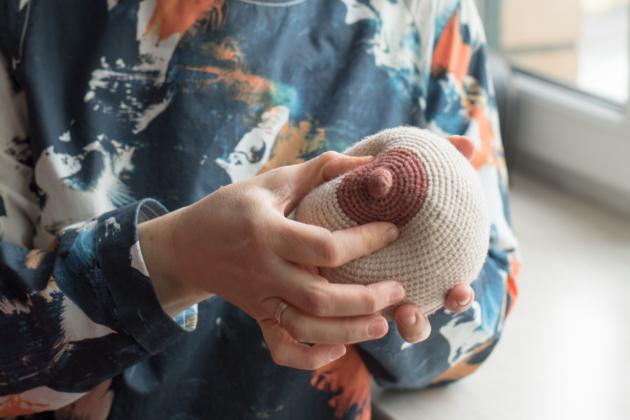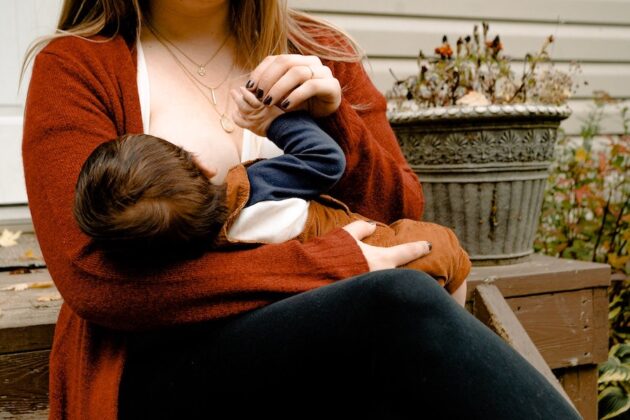Nipple Pain Breastfeeding: How to Relieve Sore, Cracked, & Sensitive Nipples
Many mothers desire to breastfeed because of the countless lifelong benefits for both moms and babies. However, some mothers face the obstacle of nipple pain related to feeding, especially during the early stages of establishing their breastfeeding relationship.
Most mothers will experience some initial nipple sensitivity, but some will experience soreness, cracking, and other nipple trauma. Nipple pain and damage can become severe without the proper interventions.
Thankfully, there are many things that you can do to prevent nipple pain as well as treat it.
This guide will cover specific causes of nipple pain and their treatment. It will also provide strategies to overcome general nipple soreness and explain how a lactation consultant can help you overcome this obstacle so that you can continue your breastfeeding journey.
Types of nipple pain from breastfeeding & strategies for relief
There are a few common reasons for nipple pain when breastfeeding. The most common cause is due to poor latching and/or positioning. When a baby is learning to breastfeed, it often takes a lot of practice to master the proper technique for pain-free breastfeeding.
Some other reasons nipple pain may occur are anatomical issues, such as flat or inverted nipples, oral restrictions/dysfunction in the baby, or an infection.
The type of treatment will depend on the cause of the pain. The underlying cause of the pain always needs to be addressed, because if you treat the symptom without treating the cause, you won’t get permanent relief.
Sore nipples from breastfeeding
Sore nipples can be mild in the beginning. Minor tenderness and discomfort will resolve as breastfeeding becomes easier. If the baby is latching, and positioning is good, then this soreness should resolve within the first one to two weeks.
If there are continued challenges, though, this tenderness can progress to nipple damage. A warning sign that nipple damage may happen is feeling pinching when the baby is sucking, versus a pulling sensation. Another red flag is the nipple being misshapen when the baby detaches from the breast.
Causes
- Poor latch and/or positioning
- Flat/inverted nipples
- Tongue/lip ties
- Not breaking suction properly when unlatching baby
Treatment
- Troubleshoot latch and position. This is the number one thing you can do to decrease nipple soreness. Baby should be latched asymmetrically with more of the bottom of the areola in their mouth than the top, and their ear, shoulder, and hip should be in alignment. You should feel tugging and not pinching when your baby is latched correctly.
- Use a nipple shield. Some babies can latch well despite their mother having flat or inverted nipples, but if they can’t, then a nipple shield may be a good option to help the baby get a deeper latch.
- Get an oral assessment of the baby. If you are having persistent pain with latching that is not improved by a better latch and positioning technique, ask a skilled lactation professional or medical provider who is trained in TOTs (tethered oral tissue) to assess your baby for lip and/or tongue ties. They often need to be addressed for the baby to latch well.
- Break suction properly. Avoid detaching the baby from the breast without properly breaking suction. This can be done by putting your pinky or knuckle into the corner of the baby’s mouth between the gums.
Swollen Nipples
Swollen nipples and excess fluid collecting in the areola and breasts can contribute to difficulty and discomfort with latching. Nipples can appear dense, puffy, and can feel slightly firm to the touch.
Causes
- Excess IV fluids in labor
- Incorrectly sized pump flanges
Treatment
- Reverse pressure softening. This technique moves excess fluid in the breasts away from the nipple and areola, allowing a deeper and more comfortable latch.
- Cold therapy. Cold compresses can decrease swelling and discomfort.
- Proper flange sizing. Having your flanges correctly sized by a lactation consultant can decrease swelling that may occur with pumping.
- Lubrication of pump flanges. This will decrease the friction in the tunnel of the pump flanges which can cause swelling.
Cracked Nipples
Sore nipples will often lead to cracked nipples and nipple trauma that will continue to get worse if the cause is not corrected. It is important to address cracked nipples so that they don’t lead to worse trauma, such as a fissure or an abscess. Cracked nipples commonly feel and look raw, and you may see some bleeding and scabbing.
Causes
- Poor latch
- Incorrect positioning
- Short, flat, or inverted nipples
- Tethered oral tissue in the baby
Treatment
- Medihoney. This medical-grade honey has been eradicated of spores and bacteria, making it safe for breastfeeding mothers to use. It has antibacterial properties that help with wound healing.
- Breast milk. This is a fan favorite because it is free and easily accessible. Rubbing a small amount of breast milk on sore or cracked nipples can speed healing.
- Hydrogel dressing. These pads are used for moist wound healing. They also have a cooling effect that can provide pain relief.
- Silver nipple cups. These cups provide a layer of protection over the nipple while the healing benefits of .925 silver do their work.
Fungal Infection
Candida, also known as Thrush, is a fungal condition that can affect moms and babies. It is very contagious, therefore both mother and baby need to be treated to prevent an endless cycle of passing it back and forth.
Causes
- Current or recent candida infection in the mother
- Recent or recurrent antibiotic treatment
- Nipple trauma
- Diabetes
- Warm, moist environment from nursing pads or bras not being changed often enough
Treatment
- Topical antifungal. Miconazole is a common topical antifungal that your medical provider may suggest.
- Oral antifungal. This will be a prescription from your physician. It can commonly take more than one round to work, depending on how severe the infection is.
Milk Blister
A milk blister, also known as a milk bleb, is a small whitish bump from a clogged pore. It can feel tender and is often described as feeling like there is a grain of sand or a tiny pebble in the nipple. These can lead to clogged milk ducts and mastitis, or breast inflammation, if not resolved.
Causes
- Poor latch
- Improperly-sized flanges
- Tight clothing or bras
Treatment
- Warm compress. Do this several times per day to help soften the area.
- Oil. Olive oil can also soften the bleb, making it easier to remove. Many find putting oil on a cotton ball in their bra helps aid the process.
- Saline soaks. Mix two tablespoons of Epsom salt with one cup of water. The salt may help dry the area out, making it easier to slough off.
- Exfoliate. End the techniques above with gentle exfoliation in a circular motion with a warm washcloth.
Strategies for treating sore nipples from breastfeeding
Sore nipples can interfere with your breastfeeding journey, so it is important to address the symptoms while determining and remedying the cause.
Kenita Chenevert, IBCLC, a certified lactation consultant, says, “My favorite tip is to use moisture therapy via warm saline soaks. Moisture therapy is a great way to begin the healing process and provide almost immediate soothing. I also like the combination of layering expressed breastmilk, a nipple balm, or a natural oil like coconut oil.”
Below are some additional ways you can treat the symptoms and get some relief:
- Try different nursing positions. Rotating positions through cradle, cross cradle, and football can decrease discomfort. Laid back breastfeeding aka biological nursing can often be an optimal position for getting the most comfortable latch.
- Start on the side that is least painful. Babies tend to start out sucking more strongly at the beginning of the feeding, so it makes the most sense to start on the least sore side first.
- Use nipple cream. There are a variety of creams and butters available, such as medical-grade lanolin. You can also use coconut oil as a nipple balm.
- Ensure flanges fit correctly and correct pump usage. Have your lactation consultant size you correctly—the flanges that come with your pump are often too large. And make sure you are not turning the suction up too high on your pump.
- Use breast shields. This barrier provides a layer to protect the nipples from excess friction against bras and clothing. “I always recommend protection of the nipple from fabrics as they can be very abrasive at times,” says Chenevert. “Great healing comes from allowing the nipple to breathe via a nipple shell instead of a breast pad. And a huge bonus is that you can collect your beautiful drops of milk instead of just soaking a pad.”
- Avoid breast pads with plastic liners and change them often. These can be a breeding ground for fungal growth.
- Apply a cool compress after breastfeeding. This can decrease pain and tenderness.
- Express milk on nipples after nursing and air dry. Breast milk is readily available and has many antimicrobial properties.
- Have your doctor or lactation consultant perform an oral assessment on your baby. Tethered oral tissue is a common culprit that often gets missed for weeks or even months. Make sure the person checking has the training to fully assess for oral restrictions (including posterior tongue ties).
How a lactation consultant can help with breastfeeding with painful nipples
“The number one tip I have for soothing nipple pain is to work with a lactation consultant to determine the cause because that is vital to achieving soothing and healing,” says Kenita Chenevert, IBCLC. “Working with a lactation consultant can improve the outcome and teach you preventative care so that once soothed and healed it doesn’t reoccur.”
An IBCLC, or International Board Certified Lactation Consultant, is an allied medical professional who specializes in the clinical management of breastfeeding mothers and babies. The IBCLC credential is the gold standard when it comes to breastfeeding support professionals.
The cost of a lactation consultant can vary, but most insurance providers offer coverage of all or part of their consultations.
Certified lactation consultants play a collaborative role on the healthcare team in supporting breastfeeding parents and babies. They have the knowledge and skills to counsel and support in various settings and situations, from simple to complex. Nipple pain and breast pain from breastfeeding are two issues that every lactation consultant can help with.
Most lactation consultants provide help via in-person or virtual consultations. They will assess the mother’s breast anatomy and the severity of the damage, as well as perform an oral assessment of the baby.
Lastly, they will observe the baby at the breast and troubleshoot latch and positioning issues. They will then recommend a plan of care and make appropriate referrals as necessary. They will likely want to follow up with you to evaluate and reevaluate the plan of care as needed.
Many mothers desire to breastfeed because of the countless lifelong benefits for both moms and babies. However, some mothers face the obstacle of nipple pain related to feeding, especially during the early stages of establishing their breastfeeding relationship.
Most mothers will experience some initial nipple sensitivity, but some will experience soreness, cracking, and other nipple trauma. Nipple pain and damage can become severe without the proper interventions.
Thankfully, there are many things that you can do to prevent nipple pain as well as treat it.
This guide will cover specific causes of nipple pain and their treatment. It will also provide strategies to overcome general nipple soreness and explain how a lactation consultant can help you overcome this obstacle so that you can continue your breastfeeding journey.
Types of nipple pain from breastfeeding & strategies for relief
There are a few common reasons for nipple pain when breastfeeding. The most common cause is due to poor latching and/or positioning. When a baby is learning to breastfeed, it often takes a lot of practice to master the proper technique for pain-free breastfeeding.
Some other reasons nipple pain may occur are anatomical issues, such as flat or inverted nipples, oral restrictions/dysfunction in the baby, or an infection.
The type of treatment will depend on the cause of the pain. The underlying cause of the pain always needs to be addressed, because if you treat the symptom without treating the cause, you won’t get permanent relief.
Sore nipples from breastfeeding
Sore nipples can be mild in the beginning. Minor tenderness and discomfort will resolve as breastfeeding becomes easier. If the baby is latching, and positioning is good, then this soreness should resolve within the first one to two weeks.
If there are continued challenges, though, this tenderness can progress to nipple damage. A warning sign that nipple damage may happen is feeling pinching when the baby is sucking, versus a pulling sensation. Another red flag is the nipple being misshapen when the baby detaches from the breast.
Causes
- Poor latch and/or positioning
- Flat/inverted nipples
- Tongue/lip ties
- Not breaking suction properly when unlatching baby
Treatment
- Troubleshoot latch and position. This is the number one thing you can do to decrease nipple soreness. Baby should be latched asymmetrically with more of the bottom of the areola in their mouth than the top, and their ear, shoulder, and hip should be in alignment. You should feel tugging and not pinching when your baby is latched correctly.
- Use a nipple shield. Some babies can latch well despite their mother having flat or inverted nipples, but if they can’t, then a nipple shield may be a good option to help the baby get a deeper latch.
- Get an oral assessment of the baby. If you are having persistent pain with latching that is not improved by a better latch and positioning technique, ask a skilled lactation professional or medical provider who is trained in TOTs (tethered oral tissue) to assess your baby for lip and/or tongue ties. They often need to be addressed for the baby to latch well.
- Break suction properly. Avoid detaching the baby from the breast without properly breaking suction. This can be done by putting your pinky or knuckle into the corner of the baby’s mouth between the gums.
Swollen Nipples
Swollen nipples and excess fluid collecting in the areola and breasts can contribute to difficulty and discomfort with latching. Nipples can appear dense, puffy, and can feel slightly firm to the touch.
Causes
- Excess IV fluids in labor
- Incorrectly sized pump flanges
Treatment
- Reverse pressure softening. This technique moves excess fluid in the breasts away from the nipple and areola, allowing a deeper and more comfortable latch.
- Cold therapy. Cold compresses can decrease swelling and discomfort.
- Proper flange sizing. Having your flanges correctly sized by a lactation consultant can decrease swelling that may occur with pumping.
- Lubrication of pump flanges. This will decrease the friction in the tunnel of the pump flanges which can cause swelling.
Cracked Nipples
Sore nipples will often lead to cracked nipples and nipple trauma that will continue to get worse if the cause is not corrected. It is important to address cracked nipples so that they don’t lead to worse trauma, such as a fissure or an abscess. Cracked nipples commonly feel and look raw, and you may see some bleeding and scabbing.
Causes
- Poor latch
- Incorrect positioning
- Short, flat, or inverted nipples
- Tethered oral tissue in the baby
Treatment
- Medihoney. This medical-grade honey has been eradicated of spores and bacteria, making it safe for breastfeeding mothers to use. It has antibacterial properties that help with wound healing.
- Breast milk. This is a fan favorite because it is free and easily accessible. Rubbing a small amount of breast milk on sore or cracked nipples can speed healing.
- Hydrogel dressing. These pads are used for moist wound healing. They also have a cooling effect that can provide pain relief.
- Silver nipple cups. These cups provide a layer of protection over the nipple while the healing benefits of .925 silver do their work.
Fungal Infection
Candida, also known as Thrush, is a fungal condition that can affect moms and babies. It is very contagious, therefore both mother and baby need to be treated to prevent an endless cycle of passing it back and forth.
Causes
- Current or recent candida infection in the mother
- Recent or recurrent antibiotic treatment
- Nipple trauma
- Diabetes
- Warm, moist environment from nursing pads or bras not being changed often enough
Treatment
- Topical antifungal. Miconazole is a common topical antifungal that your medical provider may suggest.
- Oral antifungal. This will be a prescription from your physician. It can commonly take more than one round to work, depending on how severe the infection is.
Milk Blister
A milk blister, also known as a milk bleb, is a small whitish bump from a clogged pore. It can feel tender and is often described as feeling like there is a grain of sand or a tiny pebble in the nipple. These can lead to clogged milk ducts and mastitis, or breast inflammation, if not resolved.
Causes
- Poor latch
- Improperly-sized flanges
- Tight clothing or bras
Treatment
- Warm compress. Do this several times per day to help soften the area.
- Oil. Olive oil can also soften the bleb, making it easier to remove. Many find putting oil on a cotton ball in their bra helps aid the process.
- Saline soaks. Mix two tablespoons of Epsom salt with one cup of water. The salt may help dry the area out, making it easier to slough off.
- Exfoliate. End the techniques above with gentle exfoliation in a circular motion with a warm washcloth.
Strategies for treating sore nipples from breastfeeding
Sore nipples can interfere with your breastfeeding journey, so it is important to address the symptoms while determining and remedying the cause.
Kenita Chenevert, IBCLC, a certified lactation consultant, says, “My favorite tip is to use moisture therapy via warm saline soaks. Moisture therapy is a great way to begin the healing process and provide almost immediate soothing. I also like the combination of layering expressed breastmilk, a nipple balm, or a natural oil like coconut oil.”
Below are some additional ways you can treat the symptoms and get some relief:
- Try different nursing positions. Rotating positions through cradle, cross cradle, and football can decrease discomfort. Laid back breastfeeding aka biological nursing can often be an optimal position for getting the most comfortable latch.
- Start on the side that is least painful. Babies tend to start out sucking more strongly at the beginning of the feeding, so it makes the most sense to start on the least sore side first.
- Use nipple cream. There are a variety of creams and butters available, such as medical-grade lanolin. You can also use coconut oil as a nipple balm.
- Ensure flanges fit correctly and correct pump usage. Have your lactation consultant size you correctly—the flanges that come with your pump are often too large. And make sure you are not turning the suction up too high on your pump.
- Use breast shields. This barrier provides a layer to protect the nipples from excess friction against bras and clothing. “I always recommend protection of the nipple from fabrics as they can be very abrasive at times,” says Chenevert. “Great healing comes from allowing the nipple to breathe via a nipple shell instead of a breast pad. And a huge bonus is that you can collect your beautiful drops of milk instead of just soaking a pad.”
- Avoid breast pads with plastic liners and change them often. These can be a breeding ground for fungal growth.
- Apply a cool compress after breastfeeding. This can decrease pain and tenderness.
- Express milk on nipples after nursing and air dry. Breast milk is readily available and has many antimicrobial properties.
- Have your doctor or lactation consultant perform an oral assessment on your baby. Tethered oral tissue is a common culprit that often gets missed for weeks or even months. Make sure the person checking has the training to fully assess for oral restrictions (including posterior tongue ties).
How a lactation consultant can help with breastfeeding with painful nipples
“The number one tip I have for soothing nipple pain is to work with a lactation consultant to determine the cause because that is vital to achieving soothing and healing,” says Kenita Chenevert, IBCLC. “Working with a lactation consultant can improve the outcome and teach you preventative care so that once soothed and healed it doesn’t reoccur.”
An IBCLC, or International Board Certified Lactation Consultant, is an allied medical professional who specializes in the clinical management of breastfeeding mothers and babies. The IBCLC credential is the gold standard when it comes to breastfeeding support professionals.
The cost of a lactation consultant can vary, but most insurance providers offer coverage of all or part of their consultations.
Certified lactation consultants play a collaborative role on the healthcare team in supporting breastfeeding parents and babies. They have the knowledge and skills to counsel and support in various settings and situations, from simple to complex. Nipple pain and breast pain from breastfeeding are two issues that every lactation consultant can help with.
Most lactation consultants provide help via in-person or virtual consultations. They will assess the mother’s breast anatomy and the severity of the damage, as well as perform an oral assessment of the baby.
Lastly, they will observe the baby at the breast and troubleshoot latch and positioning issues. They will then recommend a plan of care and make appropriate referrals as necessary. They will likely want to follow up with you to evaluate and reevaluate the plan of care as needed.






